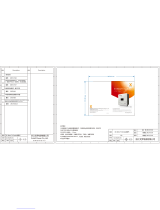
Work modes: Peak shift
1. When PV, Grid, Battery is available:
A. On charge time, solar energy will charge battery as first priority.
The excess energy will supply power to the loads.If solar energy is
sufficient to supply loads and charge battery,and If there's still some
extra energy, then the excess power will feed the power to grid
B. On charge time, solar energy will charge battery as first
priority.then the excess solar energy will supply power to loads.If
solar energy is not sufficient to charge battery and supply loads, grid
will supply all the connected loads with solar energy together.
C. On discharge time, solar energy provides power to the loads as
first priority, if solar energy is sufficient to supply loads ,and if
there's still some extra energy from solar energy ,then the excess
power and battery will deliver the power to the grid at the same
time.
D. In the period of no charge or discharge, the solar power supply
loads at first priority , excess energy to the grid.
2. When Grid, Battery is available(PV is disconnected):
A. On charge time, grid will charge battery and supply power to the
connected loads at the same time.
B. On discharge time, if load power is less than battery power,
battery will supply power to loads as first priority, the excess power
will be feed to grid.
C. On discharge time, if load power is more than battery power,
battery and grid will supply power to the loads at the same time.
Work modes: Bat priority
1. When PV, Grid, Battery is available:
A. Solar energy will charge battery as first priority, if solar energy is
excess, the excess power will supply load. If there's still some extra
energy, then the excess power will feed the power to grid .
B. Solar energy will charge battery as first priority, if solar energy is
excess, the excess power will supply load.If solar energy is not
sufficient to charge battery and supply loads, grid will supply power
to loads.
2. When Grid,Battery is available PV is disconnected):
Grid will supply power to load and charge battery at the same time.
If set anti-Reverse function allowable, Once on the work mode of Self-
use, Peak shift, battery priority, the system will not feed power to grid.
























